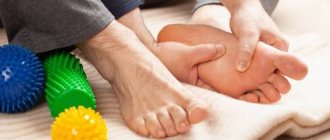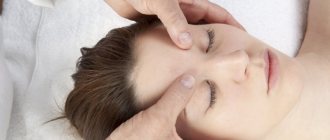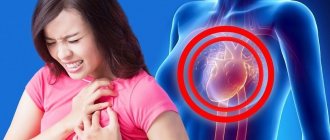Nomigren
A combined drug for relieving headache attacks of vascular origin, it helps people with migraine well. Nomigren is a relatively safe drug that contains propyphenazone, caffeine, ergotamine, meclosamine and kamilofin. "Nomigren" relieves headaches not only of a migraine nature - it is an antispasmodic and analgesic. When taking Nomigren for the first time, choose the minimum dosage, since the list of contraindications and side effects of the drug, despite its relative safety, is large.
Nomigren
Bosnalek, Bosnia and Herzegovina
acute attacks of migraine (including those accompanied by an aura);
migraine-like headaches of vascular origin. from 127
5.0 3 reviews
1013
- Like
- Write a review
Symptoms of headaches
Symptoms of tension headaches include:
- constant, non-throbbing headache;
- feeling of tension, pressure in the head and neck;
- a feeling of discomfort that does not increase or only slightly increases during daily activities.
Learning to relax through meditation, hypnosis, music, video, and stress management techniques can help prevent tension headaches.
Symptoms of cluster headaches include: - constant acute pain in the eye area, often repeating at the same time of day; - redness of the eye, watery eyes and congestion of the nostril (on one side of the face); - swelling of the eyelids. If you have a cluster headache, it is not recommended to lie down as this may only make the condition worse. Regular over-the-counter pain medications may not help against cluster headaches. Consult your doctor, he may prescribe special medications or suggest other methods of therapy.
Migraine symptoms include:
- throbbing pain with increasing intensity;
- pain is often concentrated in one half of the head;
- pain that gets worse from walking or any activity;
- painful sensitivity to light;
- nausea.
About 20% of people who suffer from migraines see bright spots or flashes of light immediately before the onset of another headache attack. These symptoms are called an aura. Some people experience a sudden surge of strength and energy before a migraine attack. In most cases, migraines require professional diagnosis and medical attention. Contact your doctor and discuss your treatment. Your doctor may prescribe a drug to relieve pain.
If you have infrequent headaches that do not cause much discomfort, you may be able to cope with them on your own. It is recommended to see a doctor if you have recurring headaches, headaches that occurred after a head injury within the last 18 months, or severe headaches lasting more than 3 days. If the headache is accompanied by nausea and vomiting, if the pain is very sharp or acute, if the headache is accompanied by fever and a stiff neck (inability to press the chin to the chest) or weakness or numbness in the arms and legs, difficulty speaking, blurred vision, uneven gait, then immediate medical attention is required.
What can you do
Do special exercises to relax. Ask your doctor to show you these exercises. Take over-the-counter pain relievers such as acetylsalicylic acid, paracetamol, or ibuprofen to relieve pain. However, they should not be abused. Using these medications too often can lead to a so-called rebound effect, causing headaches to recur. Children should not be given acetylsalicylic acid (aspirin), because its use can lead to a dangerous condition called Reye's syndrome (hepatocerebral syndrome). Try to relax, rest or sleep in a dark, quiet room, keeping your head elevated. Apply a cool compress to your head to relieve pain. Take a cool shower. Massage the muscles of your neck and shoulders.
What can a doctor do?
Frequent or very intense headaches require seeing a doctor. Only a doctor can accurately determine the cause of headaches, conducting additional examinations if necessary. The doctor will prescribe appropriate treatment, and in some cases suggest hospitalization for a detailed examination and selection of therapy.
Migrepam
The main active ingredient of Migrepam is zolmitriptan. This anti-migraine drug targets exactly the cause of the headache, so it helps to cope with even long-term migraines and severe episodes of headaches. In addition to headaches, Migrepam also relieves symptoms such as fear of light and sensitivity to sounds, nausea and sweating. Improvement occurs approximately an hour after taking the tablet. But not everyone can use this drug due to side effects. Therefore, be sure to consult your doctor before purchasing Migrepam.
Migrepam
Migrepam® effectively relieves headaches and other symptoms of migraine (nausea, photophobia, phonophobia).
Equally effective against migraine with aura, without aura and migraine associated with menstruation. from 166
344
- Like
- Write a review
Treatment of migraine: modern approaches
The disease first makes itself felt usually between the ages of 10 and 20 years. From 30 to 45 years, the frequency of attacks reaches a maximum, and after 55-60 they usually disappear. But sometimes symptoms persist even after 50 years [5-7]. There are two main types of the disease: migraine with aura and without aura. It is important to note that the course of the attack and the nature of the aura are individual for each patient. Typically, the migraine scenario repeats itself, and patients can accurately determine and differentiate the onset of an attack [8].
There are three main approaches to migraine treatment used today:
- normalization of sleep patterns, reducing the influence of stressful situations (auto-training, sessions with a psychotherapist, etc.), individually selected diet, increasing rest periods (many patients with migraine have not had a full vacation for several years);
- preventive treatment;
- relief of attacks: reduction of intensity, duration of pain, accompanying symptoms and restoration of the patient’s general condition.
For a long time, “cocktails” of analgesics or NSAIDs were used to relieve a migraine attack. The emergence of new drugs - triptans - has made it possible to open a new page of effective migraine therapy [9]. Today, triptans or 5HT1 serotonin receptor agonists (sumatriptan, zolmitriptan, eletriptan) are the “gold standard”, that is, the most effective remedy that can significantly relieve migraine pain [10].
Relpax® is an original drug from the group of triptans. The active substance is eletriptan [11]. According to the results of a clinical study in which 1334 outpatients with migraine participated, relief and pain relief was observed within 30 minutes of taking Relpax®, and the drug was also well tolerated [12].
Relpax® demonstrated superiority over sumatriptan. When comparing the effectiveness 2 hours after taking Relpax® and sumatriptan, it was revealed [13-18]: ✔ The reduction in headache intensity after taking the first dose of the drug was statistically significantly greater in the group of patients receiving therapy with eletriptan (Relpax®) than in the treatment group sumatriptan (Fig. 1):
✔ The number of patients whose headaches were completely relieved after taking the first dose of the drug was significantly greater in the group receiving eletriptan therapy than in the sumatriptan treatment group (Fig. 2):
✔ Relpax® (eletriptan) at a dose of 40 mg has better tolerability compared to sumatriptan at a dose of 100 mg (Fig. 3):
The main advantages of Relpax®:
- superiority in effectiveness over other triptans [13-18];
- good tolerability [13-17].
When prescribing Relpax®, one must adhere to three basic principles [11]:
- the drug should be taken as early as possible from the onset of a migraine attack;
- the repeat dose should be taken no earlier than 2 hours after taking the previous one;
- In 24 hours the maximum dose should not exceed 160 mg.
In general, Relpax® is well tolerated. Typically, side effects are transient, mild or moderate, and go away on their own without additional treatment. The main side effects recorded during treatment with Relpax® are typical for the entire class of 5-HT1 receptor agonists [11].
Literature
- Golovacheva V.A., Parfenov V.A. Triptans in the treatment of migraine // MS. 2015. No. 10.
- Koreshkina Marina Igorevna Modern aspects of diagnosis and treatment of migraine // Neurology, neuropsychiatry, psychosomatics. 2013. No. 2.
- Morozova Olga Grigorievna Migraine: new international criteria for diagnosis and principles of therapy based on evidence-based medicine and our own clinical experience // International. neurol. magazine; MNZH. 2021. No. 3
- Filatova E.G. Osipova V.V., Tabeeva G.R. and others. Diagnosis and treatment of migraine: recommendations of Russian experts. Neurology, neuropsychiatry, psychosomatics. 2020;12(4):4–14.
- Maksyukova E.V., Osipova V.V. Migraine in patients of the older age group: clinical and psychological analysis. Russian Journal of Pain. 2011;2:33.
- Sanoeva M.Zh., Saidvaliev F.S., Gulova M.A. Modern view on the problem of migraine (review article) // Bulletin SMUS74. 2021. No. 3 (14).
- Snopkova E.V., Sergeev A.V., Osipova V.V. Comparative clinical and psychological analysis of migraine in young and older patients. Neurological Journal. 2012;17(6):32-37.
- V.V. Osipova. Migraine: clinical picture, diagnosis and treatment approaches. "PHARMATEKA" No. 20 - 2008
- Koreshkina M. I. “Migraine in primary practice. Diagnostics and treatment", Information portal "Pain"
- Ekusheva Evgenia Viktorovna, Filatova Elena Glebovna Migraine in the clinical practice of a neurologist: a thorny path to rational treatment of patients // Consilium Medicum. 2021. No. 2.; 128-135
- Instructions for medical use of the drug Relpax®
- Sheftell F, Ryan R, Pitman V; Eletriptan Steering Committee. Efficacy, safety, and tolerability of oral eletriptan for the treatment of acute migraine: a multicenter, double-blind, placebocontrolled study conducted in the United States. Headache. 2003;43:202-213.
- Mathew NT, Schoenen J, Winner P, Muirhead N, Sikes CR. Comparative efficacy of eletriptan 40 mg versus sumatriptan 100 mg. Headache. 2003;43:214-222.
- Diener HC, Ryan R, Sun W, Hettiarachchi J. The 40-mg dose of eletriptan: comparative efficacy and tolerability versus sumatriptan 100 mg. Eur J Neurol. 2004;11:125-134.
- Sandrini G, Färkkilä M, Burgess G, Forster E, Haughie S; Eletriptan Steering Committee. Eletriptan vs sumatriptan: a double-blind, placebo-controlled, multiple migraine attack study. Neurology. 2002;59:1210-1217.
- Mandema JW, Cox E, Alderman J. Therapeutic benefit of eletriptan compared to sumatriptan for the acute relief of migraine pain—results of a model-based meta-analysis that accounts for encapsulation. Cephalalgia. 2005;25:715-725.
- Almas M, Tepper SJ, Landy S, Schweizer E, Ramos R. Consistency of eletriptan in treating migraine: results of a randomized, within-patient multiple-dose study. Cephalagia. 2014;34:126-135.
- Landy SH, Tepper SJ, Schweizer E, Almas M, Ramos E. Outcome for headache and pain-free nonresponders to treatment of the first attack: a pooled post-hoc analysis of four randomized trials of eletriptan 40 mg. Cephalalgia. 2014;34:376-381.
Sumamigren
This drug contains the substance sumatriptan, which has serotin-generating and anti-migraine effects. The headache is relieved quickly because vasoconstriction occurs selectively. Sumatriptan is a truly effective substance that helps quickly get rid of a migraine attack. “Sumamigren” contains only 50 mg of sumatriptan, so during an intense migraine attack you can take two tablets at once. Moreover, the headache will go away in about 15-20 minutes. But Sumamigren has serious contraindications and side effects, so it must be prescribed by a doctor.
Sumamigren
Polfa, Poland
Relief of migraine attacks with or without aura.
from 206
448
- Like
- Write a review
Migraine symptoms
Migraine pain is throbbing and pressing on one side of the head.
They are predominantly localized in the temple area and behind the eyes. Sometimes pain initially occurs in the back of the head and only over time moves to one part of the head. The localization of pain may change - at first the pain is on one side, but a subsequent attack of pain may be on the opposite side. Often the development of pain is preceded by a deterioration in the general condition (precursors or prodrome): muscle weakness occurs, the person is unable to concentrate. After a migraine attack, you also feel weak and the skin becomes pale.
During headaches, nausea, decreased appetite, and increased sensitivity to light are possible. More intense sensations are observed during physical activity and walking. In women, a migraine attack can trigger menstrual bleeding. The situation worsens while taking hormonal contraceptives.
Amigrenin
The active ingredient of Amigrenin is also sumatriptan, but in a higher dosage than the previous medicine. Amigrenin quickly relieves migraine symptoms, not only headaches, but also other symptoms. Moreover, if you take a pill at the beginning of the aura, you can even avoid a headache. The drug contains a high dosage of sumatriptan - 100 mg - which is why Amigrenin has such a large list of contraindications.
Amigrenin
Veropharm / Lance-Farm, Russia
The active substance of the drug Amigrenin interacts with type I 5-hydroxytryptamine receptors located in the smooth muscles of the walls of blood vessels in the brain, selectively constricts blood vessels in the carotid artery system, and inhibits the activity of the trigeminal nerve.
All this helps reduce the severity of migraine pain. The clinical effect is observed after 30 minutes. from 187
701
- Like
- Write a review
Preventive measures for migraine
For headaches of any type, it is recommended to keep a special diary. This will help determine the most common causes of headaches. The diary should contain information about meals, sleep patterns, physical activity, work and household chores. Women should also record menstrual data because... Hormonal changes can also affect headaches. To prevent headaches, avoid any triggers you've identified through your diary. Try to follow the routine. Eat at approximately the same time, 3-6 times a day, in small portions. Get enough sleep, go to bed and get up at the same time, and exercise or exercise regularly. Avoid stress whenever possible. Headaches are often the result of fatigue, tension, and emotional disorders. If you smoke, it is recommended that you quit the habit as soon as possible. Smoking can provoke or intensify them.
Sumatriptan
This drug is one of the best in the fight against persistent migraine. The active ingredient of the drug is sumatriptan succinate. "Sumatriptan" selectively constricts blood vessels without affecting cerebral blood flow. The drug not only relieves headaches, but also helps relieve other symptoms of migraine: sensitivity to light and noise, nausea. The migraine subsides just 15 minutes after taking the pill. Sumatriptan is a drug with a stable effect, so migraine attacks do not return for a long time after taking it.
Sumatriptan
Migraine medications
All drugs against migraine symptoms are divided into several categories. Each medicine can come in different forms:
- pills;
- capsules;
- suspensions for children;
- liquid syrups;
- powders for dissolution in water;
- gels and ointments;
- rectal suppositories;
- ampoules for injections.
Painkillers
Painkillers include drugs from the group of non-steroidal anti-inflammatory and non-narcotic analgesics. The principle of pain is based on inflammation caused by the chaotic contraction and expansion of blood microvessels in the brain. NSAIDs and painkillers reduce swelling at the site of inflammation, reduce the activity of nerve impulses and calm tense nerve endings. What painkillers are prescribed:
- paracetamol;
- ibuprofen;
- naproxen;
- acetylsalicylic acid;
- indomethacin;
- diclofenac;
- metamizole;
- ketorolac.
Antidepressants
Usually prescribed for the preventive treatment of headaches, attacks of which recur more than 2 times a week. The benefits of antidepressants include the following effects:
- reduce the intensity of depression that caused the disease;
- prevent depression and disorders arising from the disease;
- enhance the positive effects of NSAIDs, analgesics and triptans;
- have an antinociceptive effect;
- relaxes tense nerve endings.
Effective antidepressants are those based on milnacipran, venlafaxine, and duloxetine.
Triptans
A relatively new type of medicine for chronic headaches. Belongs to the group of selective agonists - this means that triptans have a positive effect on cerebral veins and arteries, the lumen of which expands and causes severe pain. In addition, triptans are able to prevent inflammatory processes in the walls of blood vessels and are combined with analgesics and anti-inflammatory drugs, so the drugs are often started as migraine prophylaxis.
Which triptans are prescribed for migraine:
- smatriptan;
- eletriptan;
- sumatriptan;
- zolmitriptan;
- naratriptan.
Other medications for migraines
- Beta blockers. More suitable for preventive therapy. As a rule, one drug is prescribed (propranolol, bisaprolol, metoprolol) and non-drug methods.
- Corticosteroids. Used in severe cases, the patient is given dexamethasone as an intramuscular or intravenous injection.
- Anticonvulsants. Effectively reduce the number and duration of painful attacks. Topiramate and valproate are prescribed.
- Antiemetics. Often headaches are combined with vomiting and nausea, so doctors prescribe chlorpromazine, metocllpramide, and domperidone.
- Injections. Cormagnesin helps relieve symptoms of the disease. Novocaine weakens the tension of trigger points.
Botox treatment
In severe forms of the disease, doctors actively use Botox (botulinum toxin) injections. The product was originally created to combat age-related wrinkles. Botox for severe migraines helps reduce the severity of symptoms, improve well-being, and improve the functioning of the cerebral arteries of the head.








